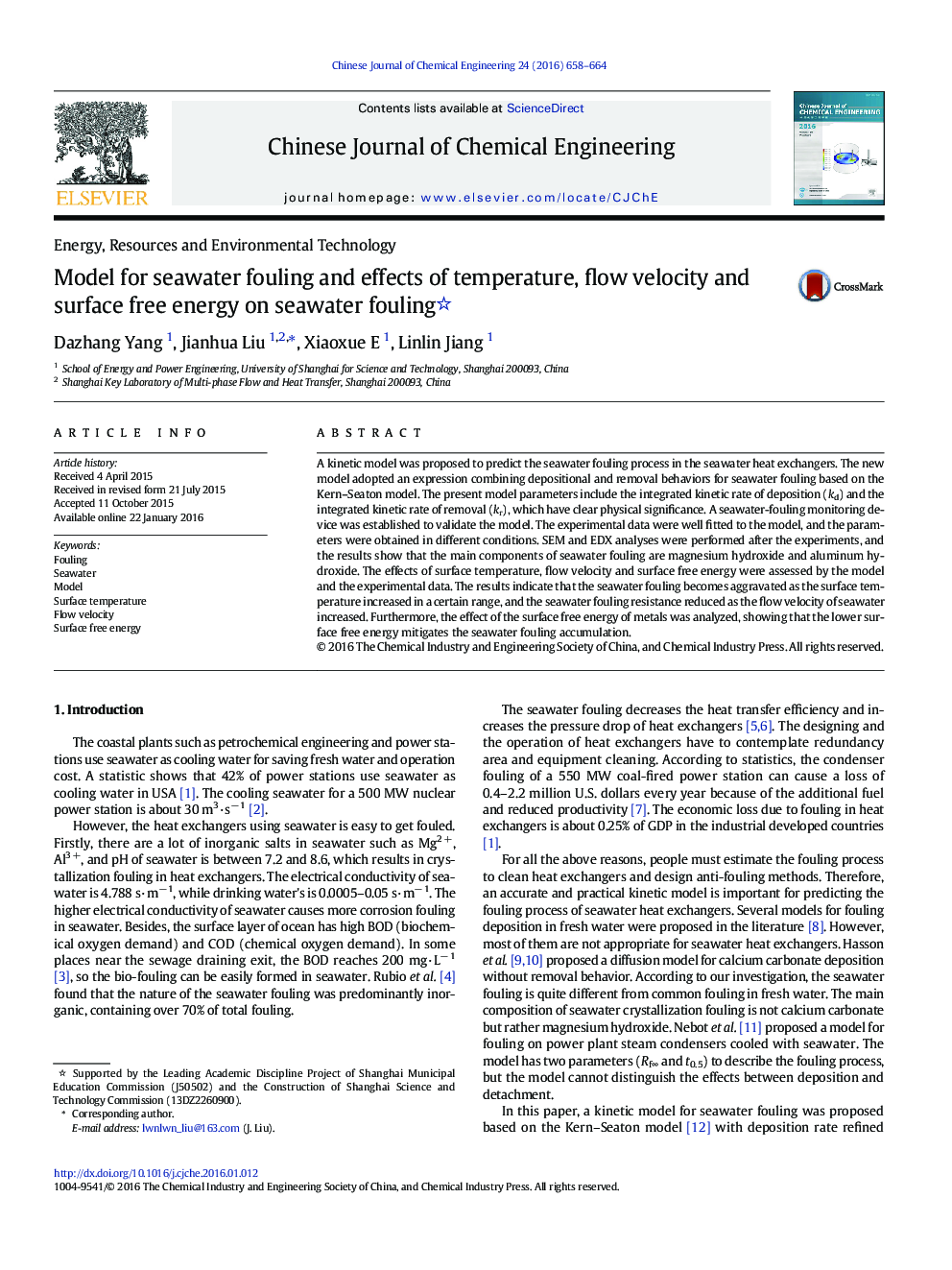| Article ID | Journal | Published Year | Pages | File Type |
|---|---|---|---|---|
| 166318 | Chinese Journal of Chemical Engineering | 2016 | 7 Pages |
A kinetic model was proposed to predict the seawater fouling process in the seawater heat exchangers. The new model adopted an expression combining depositional and removal behaviors for seawater fouling based on the Kern–Seaton model. The present model parameters include the integrated kinetic rate of deposition (kd) and the integrated kinetic rate of removal (kr), which have clear physical significance. A seawater-fouling monitoring device was established to validate the model. The experimental data were well fitted to the model, and the parameters were obtained in different conditions. SEM and EDX analyses were performed after the experiments, and the results show that the main components of seawater fouling are magnesium hydroxide and aluminum hydroxide. The effects of surface temperature, flow velocity and surface free energy were assessed by the model and the experimental data. The results indicate that the seawater fouling becomes aggravated as the surface temperature increased in a certain range, and the seawater fouling resistance reduced as the flow velocity of seawater increased. Furthermore, the effect of the surface free energy of metals was analyzed, showing that the lower surface free energy mitigates the seawater fouling accumulation.
